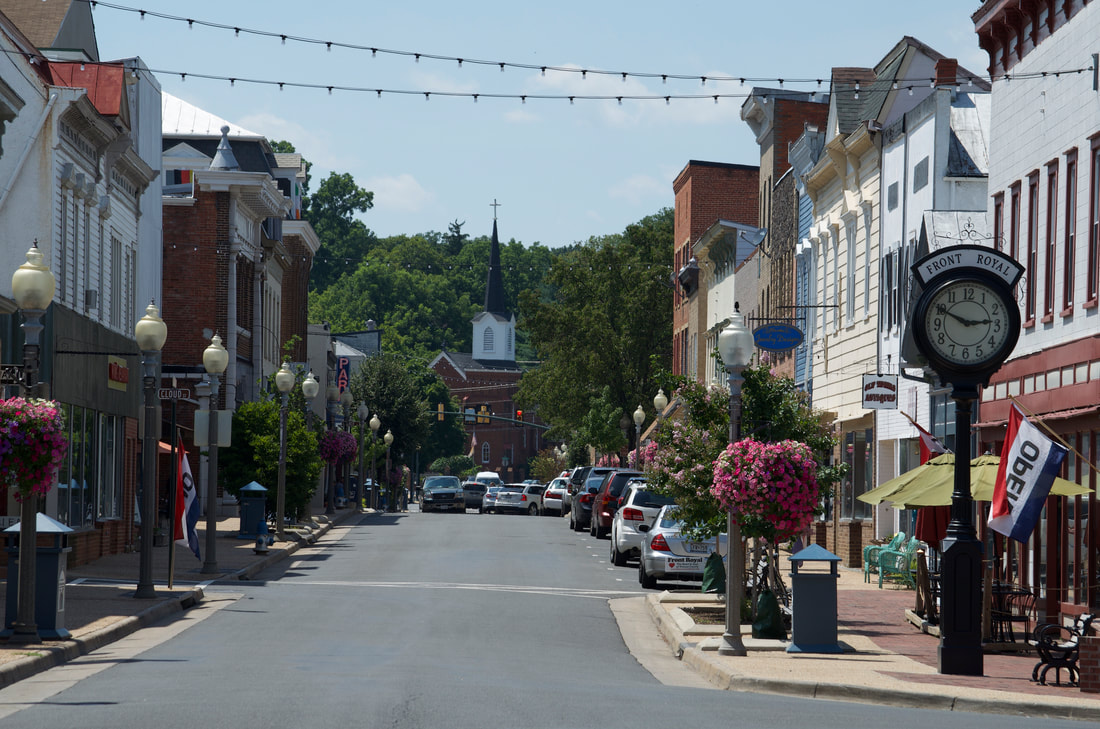
There were 5,425 households, out of which 32.2% had children under the age of 18 living with them, 46.8% were married couples living together, 14.1% had a female householder with no husband present, and 33.9% were non-families. Hispanic or Latino of any race were 2.13% of the population. The racial makeup of the town was 88.31% White, 8.68% African American, 0.28% Native American, 0.63% Asian, 0.04% Pacific Islander, 0.66% from other races, and 1.40% from two or more races. There were 5,752 housing units at an average density of 620.1 per square mile (239.3/km 2). The population density was 1,464.9 people per square mile (565.4/km 2).

Ĭlimate data for Front Royal, Virginia(1991-2020 normals)ĭemographics Historical populationĪs of the census of 2000, there were 13,589 people, 5,425 households, and 3,585 families residing in the town. Front Royal averages 43 inches of precipitation per year, with 24 inches of snowfall per year. Climate įront Royal experiences a humid subtropical climate, with summer highs in the low to mid 80s and winter lows in the upper 20s. įront Royal is located at the confluence of the North and South Forks of the Shenandoah River. In 2014, the town annexed additional land, increasing the town's total land area to 10.5 square miles (27.2 km 2). The name was in common usage by 1788, when the town was incorporated as "Front-Royal." Geography įront Royal is approximately 76 miles (122 km) west of Washington, D.C., 13 miles (21 km) southeast of Middletown, 12.5 (20 km) miles east of Strasburg and 26.3 miles (42 km) northeast of Woodstock.Īccording to the 2010 United States Census, the town has a total area of 9.5 square miles (24.6 km 2), of which 9.3 square miles (24.1 km 2) is land and 0.2 square miles (0.5 km 2) (2.52%) is water. In English, "le front royal" is translated to the "Royal Frontier". French settlers, trappers, and explorers in the Ohio Country of the mid-18th century were referring to the land grant made by King Charles II, then in control of Thomas, Lord Fairfax, Baron of Cameron. Ī third version holds that, in early decades of European settlement, the area was referred to in French as "le front royal", meaning the British frontier. Eventually their military post became known as "Camp Front Royal". Ī second account holds that when local militia were stationed around the town during the American Revolution, the sentry would call out "Front", to which the required entry password was to respond "Royal". This theory is supported by a bulletin published by the United States Geological Survey in 1905, which states that the town was first known as Royal Oak, with the current name being derived from the commands of a confused colonel. During drills, a frequent command given by the drill sergeant was, "front the Royal Oak!" The command was repeated and eventually shortened to simply "Front Royal". It was there that the local militia were drilled. Several theories regarding the origins of the name "Front Royal" have been suggested.Ī common theory is that the town was named for a giant oak tree – the "Royal" Tree of England – that stood in the public square during colonial days where Chester and Main Streets now join. The plant manufactured rayon for tires during World War II and later produced rayon for rocket nozzles for the Defense Department and the National Aeronautics and Space Administration. The American Viscose rayon plant, once Front Royal's principal employer, with 3,000 workers at its peak, operated between the 19. Lumber, agriculture, manufacturing and grain mills provided employment in the region for decades after the Civil War. This line was soon extended to Strasburg in time to become a factor in the Battle of Front Royal on May 23, 1862, and throughout the Civil War.

Rail service was established in 1854 with the construction of the Alexandria, Orange and Manassas Gap Railroad between Manassas and Riverton. It was incorporated as "Front Royal" in 1788. The town also had a well-known nickname by the 1790s, "Helltown," due to the many livestock wranglers and boatmen on the Shenandoah coming through the area, who came into town looking for alcohol. Front Royal, originally settled in 1754 under the name LeHewtown, had been known to European explorers as early as the 1670s, and the nearby settlement of Chester's Ferry was in existence by 1736. The Iroquois formally sold their entire claim east of the Alleghenies to the Virginia Colony at the Treaty of Lancaster in 1744.

Some bands of the Shawnee settled in the area as client groups to the Iroquois and alternately to the Cherokee after 1721. The entire Shenandoah Valley including the area to become Front Royal was annexed and claimed for hunting by the Iroquois Confederation during the later Beaver Wars, by 1672. Mid-20th century postcard showing an aerial view of the American Viscose Corporation Plant in Front Royal, Virginia.


 0 kommentar(er)
0 kommentar(er)
